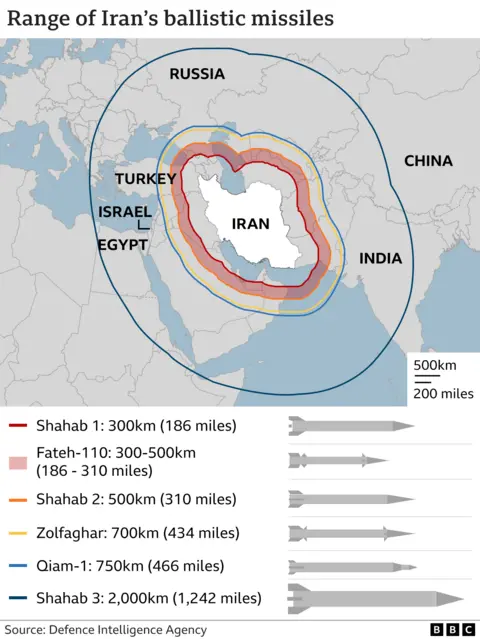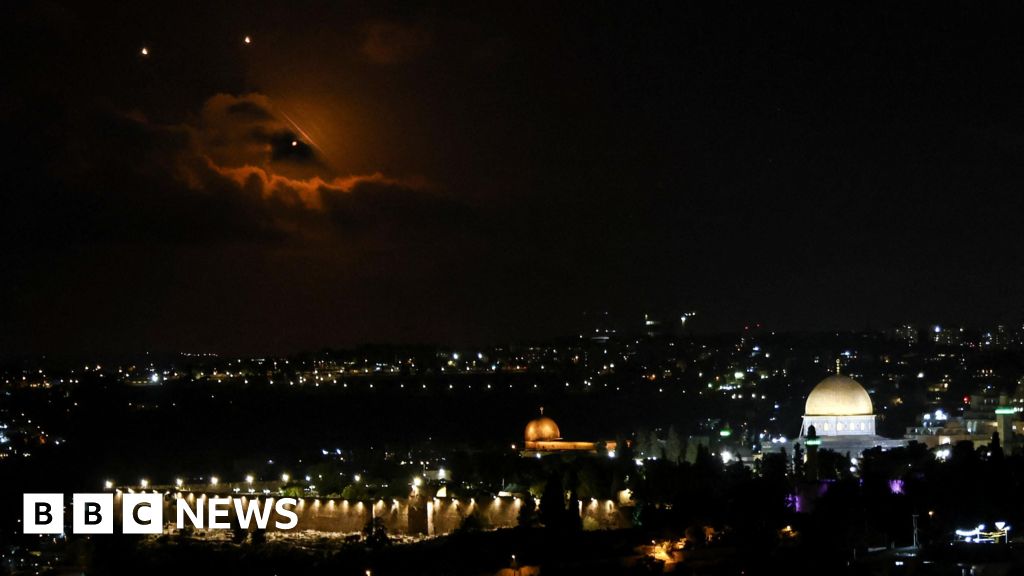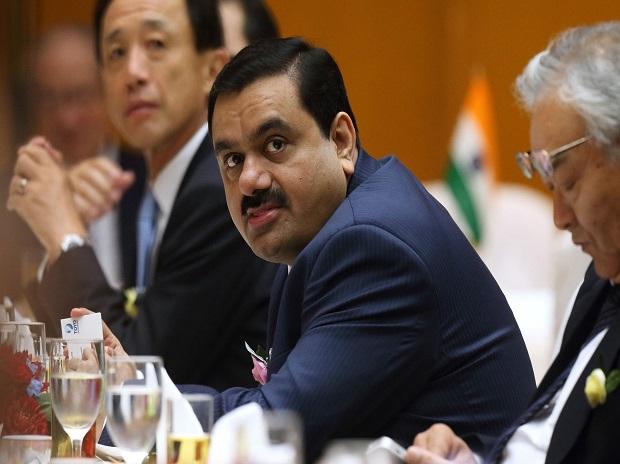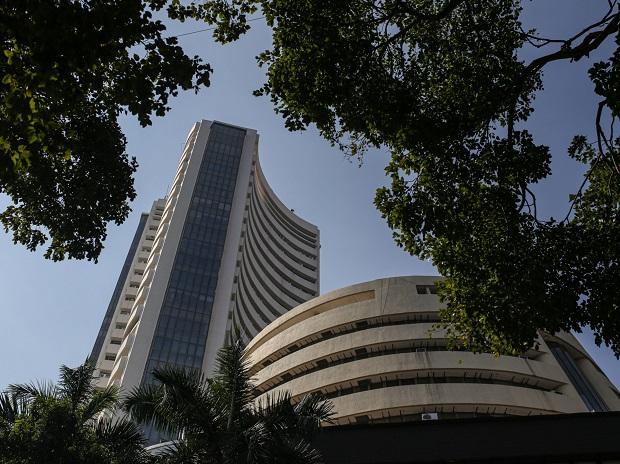Iran has launched hundreds of missiles towards Israel, with at least some striking Israeli territory. It is the second attack by Iran this year, after it fired hundreds of missiles and drones at Israel in April.
Israeli army officials said the attacks appear to be over and that there is no more threat from Iran “for now”. But it is not yet unclear how much damage has been caused.
Here’s what we know so far.
What was the scale of Iran’s attack?
Iran launched around 180 missiles towards Israel, the Israeli military said. That would make it a slightly larger attack than April’s barrage, which saw about 110 ballistic missiles and 30 cruise missiles fired towards Israel.
Footage carried by Israeli TV appeared to show some missiles flying over the Tel Aviv area shortly before 19:45 local time (17:45 BST).
Military officials have confirmed that some hits were recorded during the attack. A military spokesperson said Israel recorded “a few hits in the centre and other areas in the south of the country”.
Meanwhile, Iran claimed that 80% of projectiles hit their targets. IRGC sources told state media in Tehran that it had targeted three Israeli military bases in the attack.
But the Israeli military emphasised that “a large number” of the missiles fired by Iran were intercepted. Flashes in the sky above Tel Aviv appeared to show air defences intercepting some incoming fire.
In Jerusalem, BBC reporters on the ground said they heard at least two interceptions.
Israeli medics said they had yet to receive reports of any serious injuries, though two people were slightly wounded by shrapnel. The military issued a similar message.
Why has Iran attacked Israel?
Iran’s Islamic Revolutionary Guard Corps (IRGC) said in a statement that the attacks were in response to Israel’s killing of a top IRGC commander and leaders of Iran-backed militias in the region.
It mentioned the killings of Hezbollah chief Hassan Nasrallah and IRGC commander Abbas Nilforoshan in Beirut last weekend.
It also referenced the killing of Hamas political leader Ismail Haniyeh in Tehran in July. While Israel has not admitted to being behind Haniyeh’s death, it is widely believed to be responsible.
A senior Iranian official told Reuters that the country’s Supreme Leader, Ayatollah Ali Khamenei, had personally given the order to attack.
The attacks are merely the latest escalation in a long-running shadow war between the two powers. Iran does not recognise Israel’s right to exist and seeks its eradication. It has spent years backing paramilitary organisations opposed to Israel as part of its Axis of Resistance.
Israel believes that Iran poses an existential threat and has spent years running covert operations against Tehran.
How have Israel’s allies reacted?
The White House said President Joe Biden had ordered US forces in the region to “aid Israel’s defence” and shoot down Iranian missiles.
One Pentagon official told the BBC’s US partner, CBS News, that American assets in the region had intercepted some of the incoming missiles and were continuing to defend Israel.
The Reuters news agency reported witnessing some missiles being intercepted as they flew over neighbouring Jordan. The country also show down a number of missiles during Iran’s last attack in April.
What happens next?
The Israeli military is already warning of severe repercussions following the attack. Israel Defense Forces (IDF) spokesperson Daniel Haggari said the attack had been “serious” and that the country remained on high alert.
“This attack will have consequences,” Rear Adm Haggari said. “We have plans, and we will operate at the place and time we decide.”
Earlier, US Defense Secretary Lloyd Austin said there would be “severe consequences” for Iran if it carried out an attack on Israel following a conversation with the country’s defence minister, Yoav Gallant.
In its statement, the IRGC said that Tehran’s response would be “more crushing and ruinous” if Israel retaliated.

Note:- (Not all news on the site expresses the point of view of the site, but we transmit this news automatically and translate it through programmatic technology on the site and not from a human editor. The content is auto-generated from a syndicated feed.))




